This or That: Bosnian, French, or Spanish Sage
Jun 1st 2023
Posted by Dr. Christoph Streicher and Chase F.
Almost
everyone has heard of Sage. In fact, for just one word it has quite a bit of
reach. A Sage is a wise person. A wise person is Sage. Therefore, a Sage is Sage?
Hmm… words are fun! Most people also know that Sage is an herb which has traditionally
been used as seasoning for food (think turkey stuffing), and for physical,
mental, and spiritual applications throughout history. Many have seen or heard
of a “smudging” ceremony in which a bundle of Sage is lit for the smoke to be
used as a clearing agent to rid an area of bad “spirits” or “energies.” Unfortunately,
this blog writer was once in jeopardy of being kicked out of a college dorm
room after a smudging ceremony was mistaken for a typical “smoke session” by
the local Resident Advisor who apparently was completely unaware of Sage’s aromatic
profile and ceremonial use. So, let’s give ourselves a little refresher course
on just what Sage is and what it can do.
What is Sage? How do the species of Sage differ?
First off, understand that there are many species of Sage, which is classified in the genus called “Salvia.” To narrow things down right off the bat, there are four species of Sage which are commonly harvested for their essential oils to be used in the realm of aromatherapy: Salvia officinalis (Common Sage), Salvia lavandulifolia, (Spanish Sage), Salvia apiana (White Sage) and Salvia sclarea (Clary Sage). Salvia apiana is distilled by several distillers in the US, but plays only a minor role in aromatherapy. In the interest of further simplicity, we will now remove the latter two from the focus of this article as they are distinctly different from Common Sage and Spanish Sage both in species and practical application. Please feel free to refer to the Amrita Blog Product Spotlight: Clary Sage to discover more about that particular product.
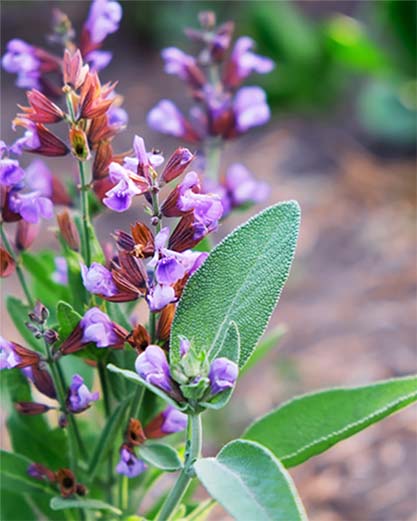
This still leaves three Sage Essential Oils to be discussed and compared throughout the rest of this article: French Sage, Bosnian Sage, and Spanish Sage. These three products exhibit a spectrum of chemical differences between them, even while there can be overlap amongst their therapeutic benefits. For instance, French Sage and Bosnian Sage are both from the same species of plant (Salvia officinalis), but their chemical makeups are slightly different, respective to their concentrations, due to unique factors of the environments from which they are sourced. Specifically, Bosnian Sage Essential Oil generally contains higher levels of ketones like ɑ-Thujone and β-Thujone than French Sage Essential Oil, probably due to climatic conditions and soil salinity. Because ketones are potentially toxic compounds which demonstrate highly potent effects on the body, French Sage is regarded as milder and less stimulating than Bosnian Sage.*
Spanish Sage Oil comes from a different species (Salvia lavandulifolia) of plant than the “common” species (Salvia officinalis) shared by Bosnian Sage and French Sage. Thus, it exhibits different therapeutic benefits. Sometimes called “Lavender Sage,” its aroma is slightly more piney, and it grows in fewer regions than the “common” variety. The most notable difference, however, is that Spanish Sage Oil does not contain the toxic ketones mentioned in the previous paragraph regarding Bosnian Sage Oil and French Sage Oil. Out of the three varieties of Sage Oil spotlighted in this article, Spanish Sage Essential Oil is of the least concern when regarding safety.* It is also more calming and less stimulating than its “common” counterparts.* It should be noted though, that Spanish Sage can contain a different compound called sabinyl acetate, which can be toxic in high concentrations.* Amrita strives to provide Spanish Sage Essential Oil with a maximum of 2% sabinyl acetate, which is an ideal and safe concentration.*
The simplest way to summarize the differences between Bosnian and French would be to visualize them within a spectrum. On one end of the spectrum you’ll find Bosnian Sage, which is the most stimulating of areas like appetite and energizing focus. But, it is also the most potentially harmful with its relatively higher concentration of ketones.* On the opposite end of this spectrum is French Sage, which is more calming to cramps and other symptoms of muscular pain, and many find it to be the most “pleasant” of Sages.* Lastly, this leaves Spanish Sage somewhere outside of this spectrum as it is a different species. It contains virtually zero ketones, but it has different therapeutic properties such as promoting blood flow and reducing stress.*
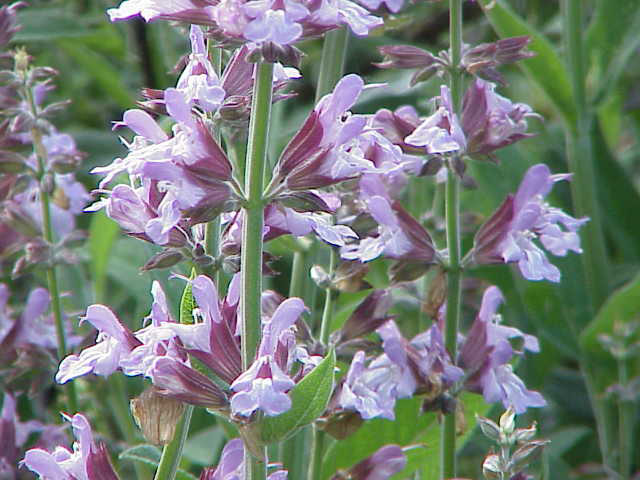
What are the Therapeutic Benefits of using Sage Essential Oil?
Sage Essential Oil demonstrates a wide variety of potentially therapeutic benefits to the user, when used appropriately. It can also mitigate hair ailments while regulating issues with excess sweat.* Sage is also great for digestive issues!* It can help stimulate the appetite, ease stomach cramping, support insulin balance, and act as a diuretic.* When inhaled, it can also lighten respiratory concerns, expel excess mucous, and soothe a sore throat.*
As an anti-inflammatory, Sage can be quite effective in mitigating pain.* Whether tackling pain associated with rheumatism, arthritis, or otherwise, its powerful warming qualities can be astonishingly helpful.* It also is an anti-spasmodic which can help with cramping, including but not limited to menstrual and / or menopausal cramping.* In fact, Sage Essential Oil is also classified as an emmenagogue, which means it can help stimulate the menstrual cycle; in cases where the process is scant or painful, this makes Sage a handy tool for women to have on hand.* However, it needs to be used in very small quantities.
Sage Essential Oil can uplift the mood and improve mental activity in a range of ways.* As previously mentioned, these effects will differ depending on whether it is the Bosnian, French, or Spanish variety of Sage being used. Bosnian Sage is the most stimulating of these three, as it contains the highest concentrations of ɑ-Thujone and β-Thujone.* French Sage, to a milder extent will deliver similar results but with a more pleasant and balanced feel, while Spanish Sage will tend to have a more calming effect on the nervous system.* All three of these products, however, have been purported to provide an increase in memory retention and overall brain function.* Keep in mind, the word “Sage” itself is probably synonymous with “wisdom” for good reason!
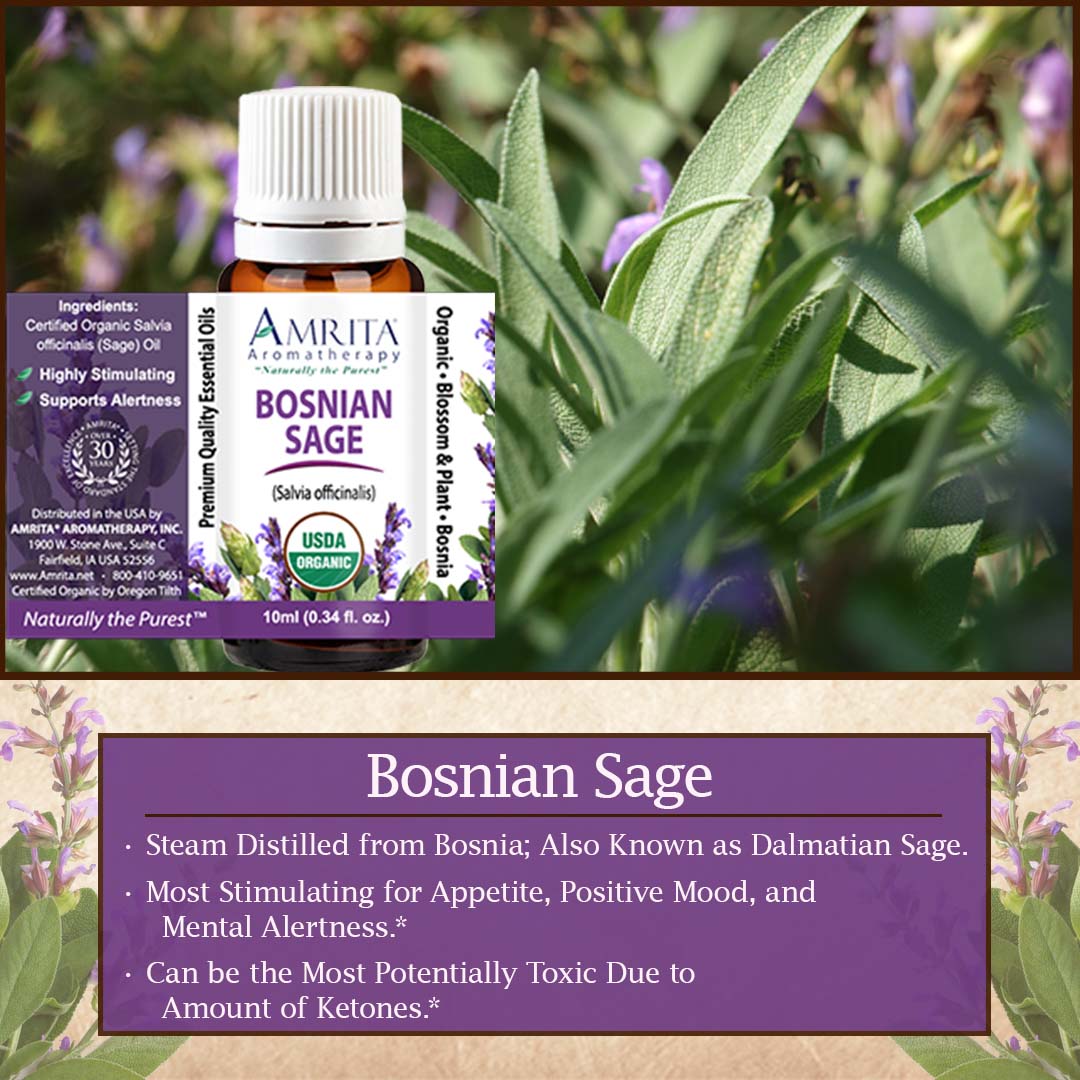 | 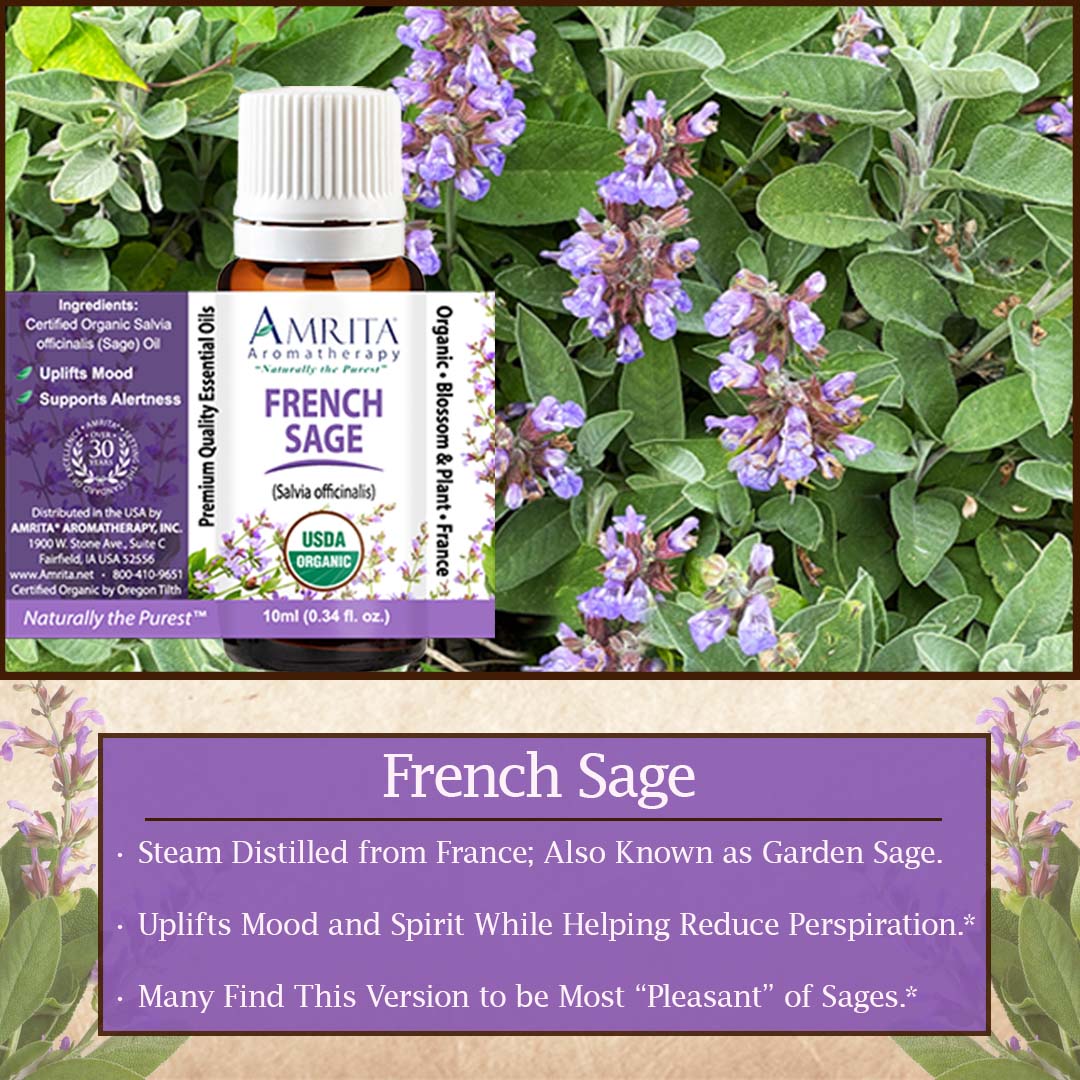 | 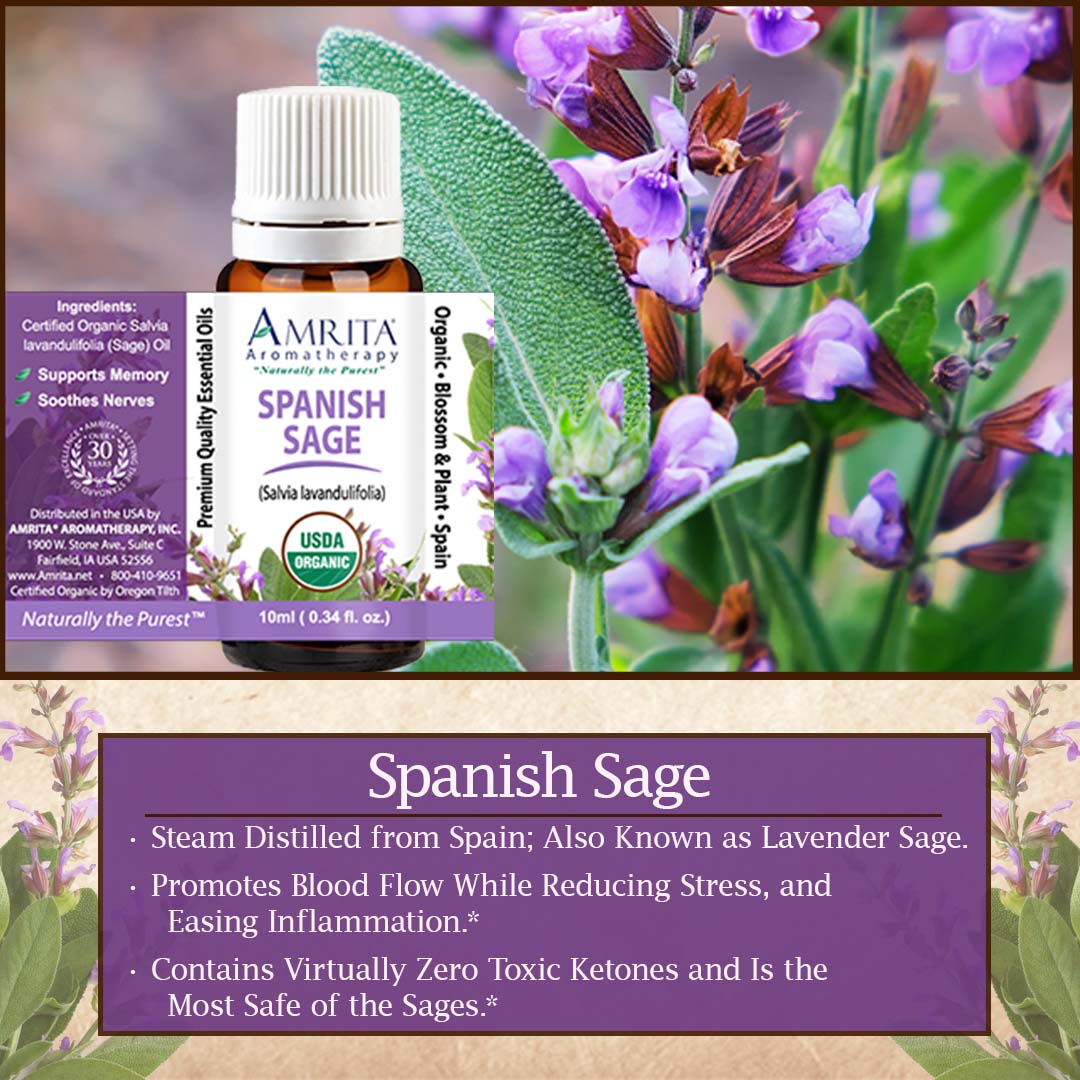 |
How would you use Sage Essential Oil?
Sage Essential Oil can be used in a range of application methods, depending on the desired effects. Apply a properly diluted dose topically to the skin or scalp to clean and assist with the healing of cuts, abrasions, or bites, or to soothe areas where pains, aches, or cramps persist.* Topically apply to the chest to experience its respiratory benefits, as well as to support healthy digestive function and address potential concerns with menstrual and/or menopausal activities.*
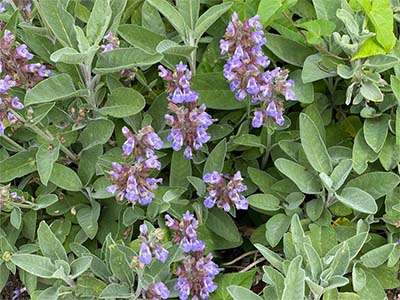
Other topical methods of application include whole-body massage and aromatic bath, which will activate Sage’s abilities regarding mood enhancement, increase in mental activity, and improvement of memory.* Just remember that Bosnian Sage will be the most aggressively stimulating while French Sage can be used to uplift the mood in a comparatively milder manner, but Spanish Sage will tend to provide a more soothing, calming effect on the mind and body.* The massage and bath methods will also provide some of the aforementioned benefits to the musculoskeletal system and (female) reproductive system while also mitigating problems with excessive sweating.*
The diffusion / inhalation method is perhaps the most direct way to receive Sage Essential Oil’s benefits regarding the nervous system. Again, keep in mind Bosnian Sage, French Sage, and Spanish Sage’s respective places within the spectrum established earlier in the article.* While each will uplift the mood, enhance cognitive function, and improve memory function; the Spanish Sage will be the most calming while the Bosnian Sage will be most stimulating, as the French variety finds itself pleasantly in between.* Diffusion / Inhalation will also provide the user with Sage’s benefits toward the digestive, respiratory, and (female) reproductive systems.*
Let’s look closer at each method along with some of their specific attributes.
- Overall Topical Application: 1%
Dilution
- This is the best method of use for Sage Essential Oil when it comes to obtaining its positive benefits for the musculoskeletal system. If tackling pain is a priority, focus the application on areas where cramping, aching, and/or soreness persists.* This method also can provide benefits to the respiratory, digestive, and (female) reproductive systems.* Proper dilution for this method is 1% (5 drops per tablespoon of carrier oil), but higher concentrations should be reserved for the comparatively mild Spanish Sage Essential Oil while lower concentrations should be used for French Sage and especially Bosnian Sage.*
- Whole Body Massage Application: 1%
Dilution
- Sage Essential Oil can also be applied via whole-body massage! Try this method with any of the three types of Sage Oil depending on your desired result. Use Bosnian Sage Essential Oil when seeking a more stimulated, energized state of mind.* If this proves a little intense, try taking it down a notch with the pleasantly milder French version.* Or, calm and soothe the nervous system with Spanish Sage while still receiving the same cognitive benefits as expected from its botanical cousins.* The whole-body massage method will additionally provide support for the musculoskeletal system in the form of pain relief, the (female) reproductive system by reducing cramps and encouraging regular menstrual activity, the integumentary (skin / hair) system, and the digestive system.* Proper dilution for this method is up to 1% (no more than 5 drops per tablespoon of carrier oil).*
- Aromatic Bath Application: 1%
Dilution
- Perhaps you would like Sage Essential Oil to provide all the same benefits one would expect to receive via the whole body massage method, but you would prefer the immersive experience of an aromatic bath. Hey, no problem! Simply dilute up to 5 drops into your favorite bath salts or bath milk before adding to a full, warm tub of water and enjoy. Spanish Sage will calm and soothe the nerves, while French and especially Bosnian Sage will prove to be more stimulating.* All the while, this method will endow the user with significant benefits to the musculoskeletal, (female) reproductive, digestive, and integumentary (skin / hair) systems.*
- Diffusion / Inhalation Application:
Add a few drops to a Nebulizer or Nasal Inhaler
- This method will maximize the benefits of Sage Essential Oil to the nervous system.* Use it to uplift the mood and reduce symptoms of depression.* For the utmost in stimulation and alertness, try this application method with Bosnian Sage…but keep in mind it is the most aggressive and potentially toxic of the three, so use with caution.* For a comparatively milder and balanced mood boost, try French Sage.* And if you are looking for a calmer state of mind which still exhibits improved cognitive function, try Spanish Sage.* The diffusion / inhalation method is also great for unlocking Sage’s potential to aid in respiratory and digestive activities, as well as to assist with healthy (female) reproductive functioning.*
What would blend well with Sage Essential Oil?
When making the “perfect” blend, many experts will tell you that you need a “top”, “middle”, and “base” note to create a balance between the oil. While this may be true when thinking about the aroma, this is not always the case when thinking about being a therapeutic blend.
Sage Essential Oils find themselves right at home blending with a range of other aromas. To create a powerful, invigorating bouquet, try blending some Bosnian Sage with Peppermint and Ginger. Looking to tackle respiratory issues?* Try teaming up French Sage with Tea Tree and Patchouli. Lastly, to alleviate stress and provide a sense of calm while maintaining focus, you can try blending Spanish Sage with Lavender Extra and Frankincense Carteri.*
Here are a few DIY recipes for you to try at home:
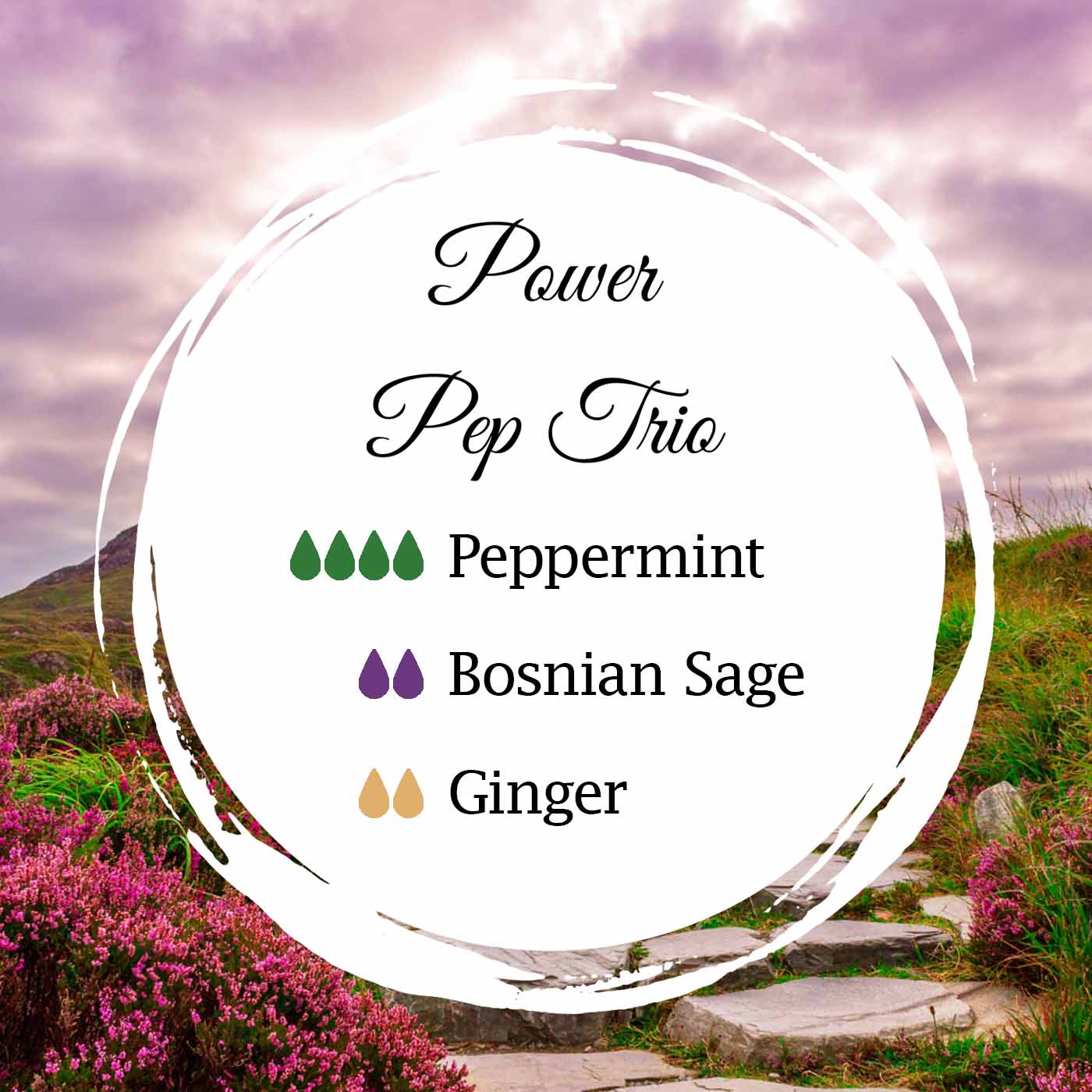 | 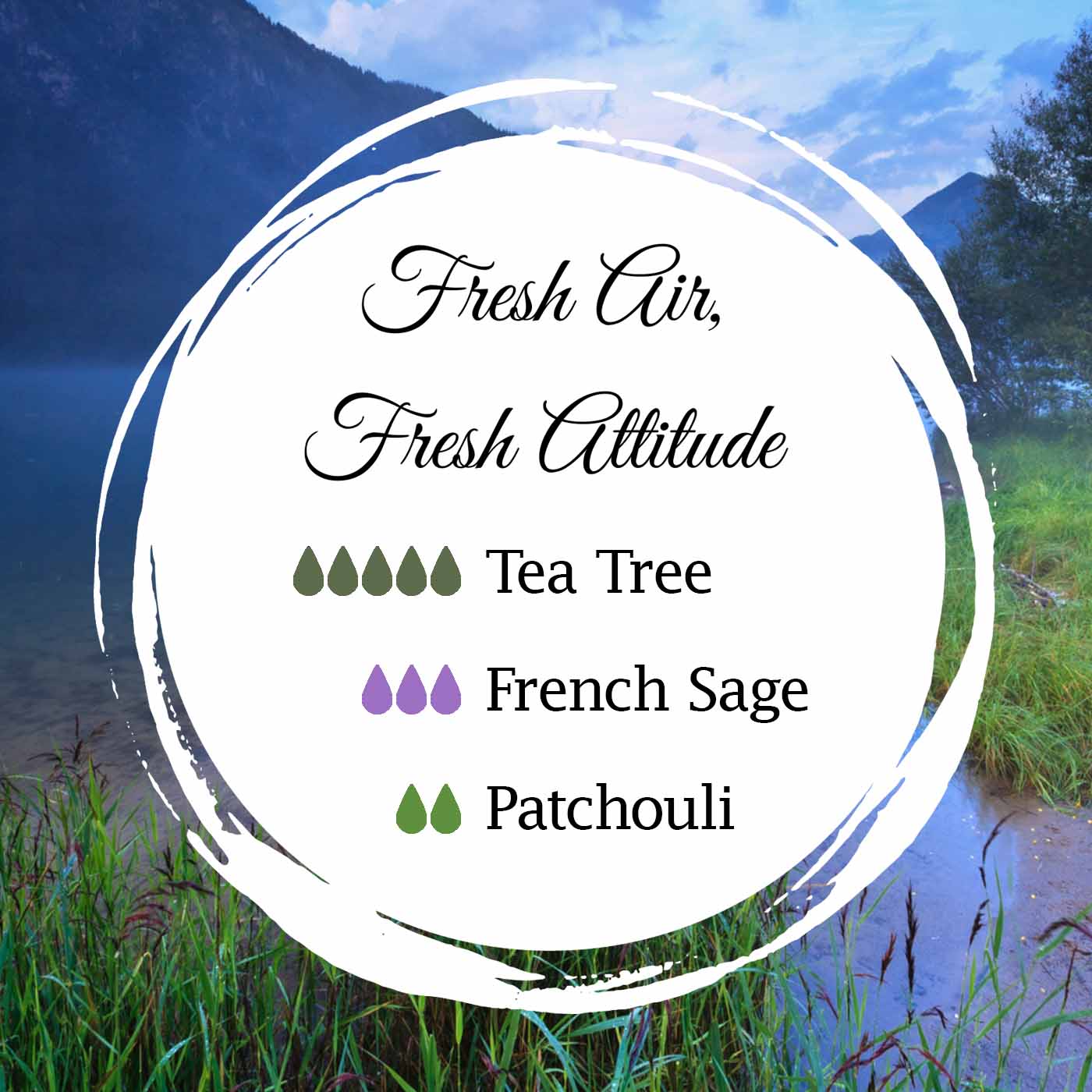 | 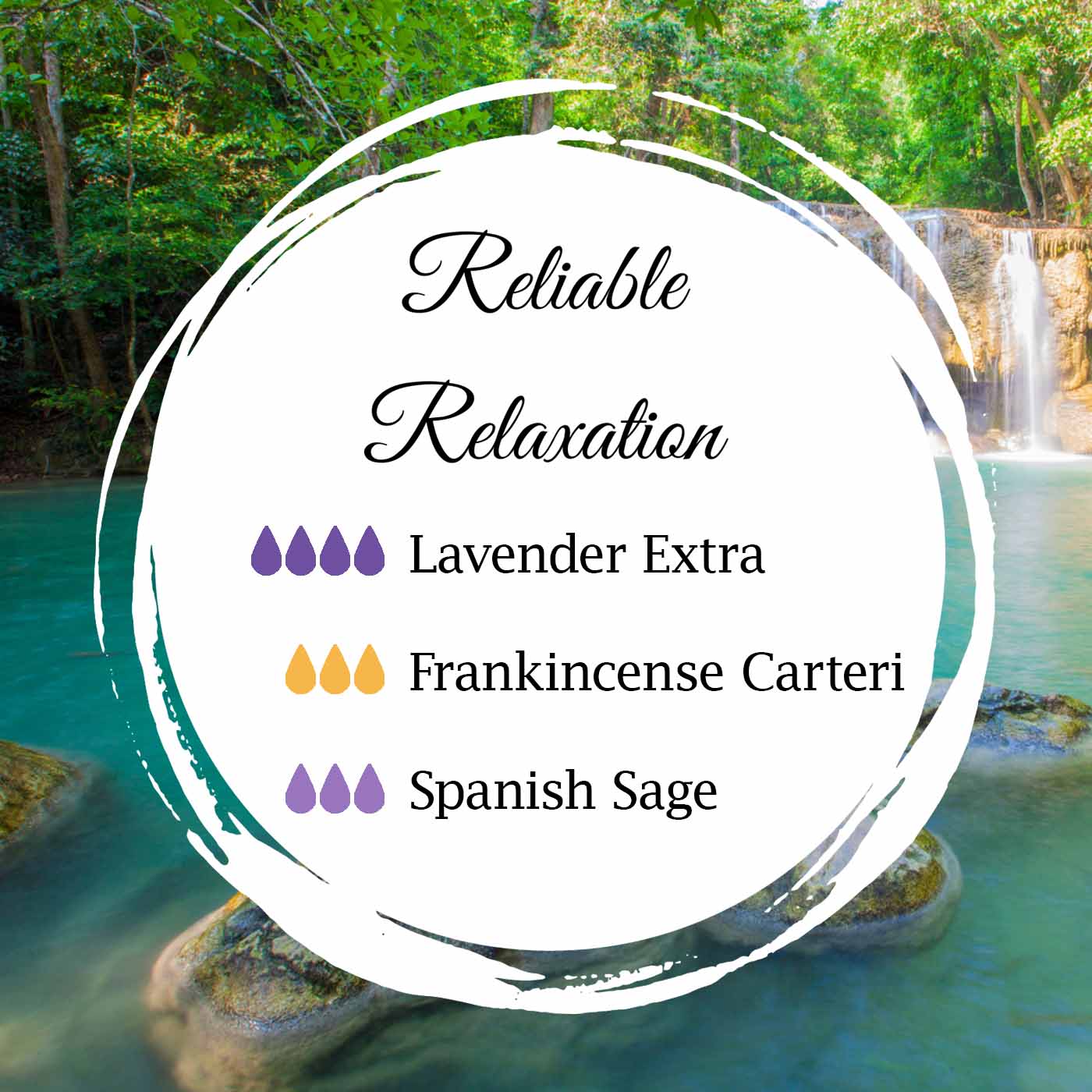 |
Final Thoughts from the Amrita team…
If a wise person is considered “Sage,” then hopefully this article on Sage has left you feeling wiser. There is a lot of knowledge to be learned when it comes to the diverse range of Sage species, and a lot of therapeutic benefits to be gained by the properly educated connoisseur.* Hopefully, it is clear at this point that picking one type of Sage Essential Oil simply does not cover all the bases. Bosnian Sage, French Sage, and Spanish Sage each have unique attributes which can apply to a broad spectrum of unique needs for unique folks. But don’t take this blogger’s word for it… Give them all a try now that you understand what differentiates each one from another and start filling in the gaps of what could be an impressively comprehensive aromatherapy toolkit!
Happy Blending!
*These statements have not been evaluated by the Food and Drug Administration. These products are not intended to diagnose, treat, cure, or prevent any disease.

